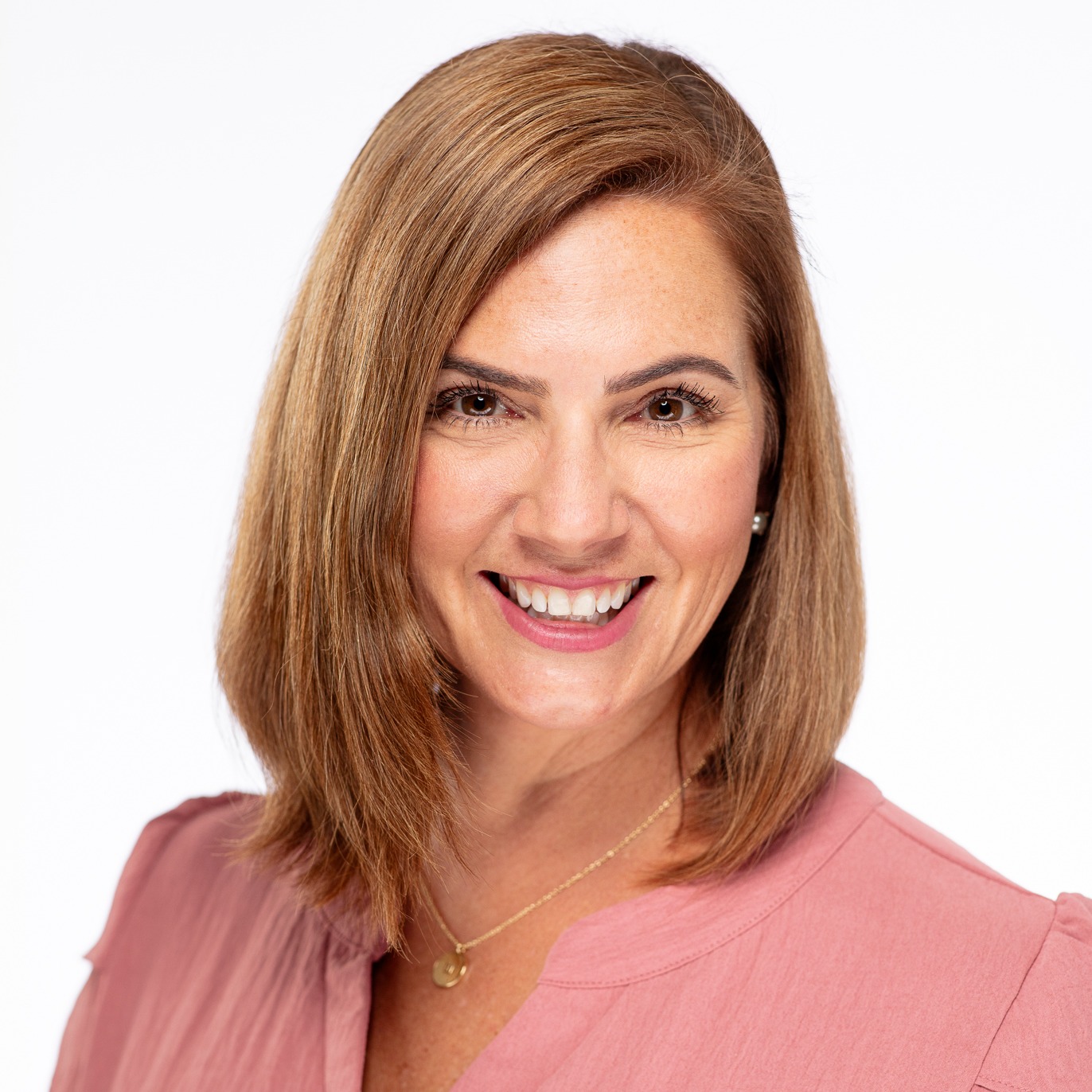Two weeks ago, while I was signing up for my own children’s parent-teacher conferences, I was reminded of a memorable coaching conversation I had with a principal I was so lucky to work with last year. As both a mama and an inclusive educator, I appreciated how similar our goals were to nurture what I call the 4 C’s: compassion, curiosity, creativity, and collaboration for every learner and family.
It was October, and I had spent the day observing classrooms where Universal Design for Learning (UDL) was starting to create some traction. Anytime I am in classrooms with students, my bucket is full, but it's overflowing when I see UDL in action! Students were making choices, sharing their ideas, and showcasing their learning in ways that went far beyond the worksheet. The energy was electric; students were not only engaged, they were developing agency and building communities of true belonging.
Later that day, as the principal and I debriefed, we began to think about how we could take this work to the next level, not just celebrating engagement, but deepening reflection. I leaned in with a question:
“What are we noticing about student reflection and goal setting? How are we supporting students to identify what helps them succeed?”
The principal paused. It was clear that we had seen so much choice and voice, but not as much reflection or goal setting. That question opened a door. We started talking about the importance of reflection within the education world and as UDL practitioners, and how reflection doesn’t just live inside classroom walls; it can extend into the ways we connect with families, too. What if we brought UDL into parent-teacher conferences, I asked. What if these conversations weren’t just about reporting progress, but about nurturing the 4 C’s and relationships, belonging, and student agency?
The Purpose: Reflection, Goal Setting, and Connection
As educators, we often think of parent-teacher conferences as checkpoints: a chance to share progress, discuss data, and set goals aligned with grade-level standards. But what if they became design opportunities for belonging and learner agency instead? In a UDL-aligned system, reflection and goal setting are not additional steps to take; they’re essential tools for building learners who know how they learn and what helps them thrive.
When we intentionally weave in reflection and goal setting into parent-teacher conferences, we give students a voice in their own learning, invite families into authentic partnerships, and build bridges between home and school that strengthen community, trust, and true belonging.
It Starts with Listening
The coaching conversation continued, and before we even talked about student reflection, we started to discuss the importance of family voice. The principal shared about a process their school began implementing: Family Connection Meetings. Family connection meetings are intentional conversations that happen before the first day of school, or if that isn’t possible, they can still be incorporated before fall conferences begin.
The beauty of these meetings is that they completely flip the roles of who is sharing information about the student. Instead of teachers introducing students to families, families are invited to introduce their child to the teacher. Parents and caregivers share stories, strengths, and dreams. They describe what helps their child feel confident, what sparks joy, and what has been hard in the past.
This simple shift embodies UDL, co-designing with people, not for them. By beginning the year with families’ voices at the center, teachers are able to gather invaluable insight into learner identity, strengths, and goals. And for families, especially those who haven’t always felt seen or heard in school settings, it fosters trust and connection before the first assignment is even given.
When You Don’t Have Family Connection Meetings…You Can Still Design for Belonging
Of course, not every school has Family Connection Meetings, but the spirit of those conversations can live in every conference we design. Even if your school doesn’t have a formal structure like this, you can still begin your conference process by listening first. For example, a week or two before conferences, invite families to share insights through a short form, a phone call, or a simple digital survey. Frame the invitation intentionally:
“We’d love to begin our conference by hearing from you. Your insights about your child help us design the best learning experiences possible.”
Ask questions like:
- What do you want your child’s teacher to know about them as a learner and as a person?
- What helps your child feel confident or successful?
- What are your hopes and goals for your child this year?
This approach shifts the focus from evaluation to collaboration. It communicates that families are not guests; they’re co-designers in the learning journey.
Language Matters: Designing for Belonging Through Inclusive Communication
The power of our words can either open the door to partnerships or close them. Every word we use signals whether families belong. Many parents and caregivers bring their own educational experiences, not all of them positive, into these moments. Our language can either reinforce old barriers or open doors to trust. Here are a couple of considerations for you to try:
- Instead of “Both parents,” say “Parent, guardian, or caregiver.”
- Instead of “Mom or Dad,” say “Your family” or “The adults who care for (name the student).”
- Instead of “Non-English speaking,” say “Multilingual family.”
- Instead of “Special Needs,” say disability (it’s not a bad word)
- Instead of “He/She” (when pronouns are unknown), say “They.”
Inclusive language communicates that every family, every culture, and every story has a place in our school community. You can model that tone right from the first contact:
“We’re excited to connect and learn from you about your child’s strengths, interests, and hopes for this year.”
From Family Voice to Student Agency
When families begin the year by sharing their child’s story, they model reflection and advocacy, the same skills we hope to nurture in our students. By the time the October conferences arrive, students can step into that same reflective space. They can share what’s helping them learn, what’s challenging, and what goals they’re setting next. Imagine if each conference included a student-led reflection like:
- “It helps me when…”
- “I’m proud that I…”
- “I focus best when…”
- “I’d like my teacher and family to help me with…”
When we create space and place for both family and student voices, we begin to see the learning community as a true collaboration where everyone contributes to growth.
Making Reflection Developmentally Meaningful: Student Voice by Grade Band
Reflection and goal setting look different at every age, but each stage offers a way for students to feel seen, valued, and capable. Consider using these ideas to help incorporate your students’ voices for parent-teacher conferences.
Preschool
Capture joyful learning moments through photos or short videos and let students choose favorites. Use visuals or emotion cards. Share snippets of student language or art during conferences so families see learning through their child’s perspective.
TK–Kindergarten
Use sentence stems like “I can…,” “I am learning to…,” or “I want to try…” Invite students to draw or record short reflections. During conferences, have students share one piece of work and tell the story behind it.
Grades 1–2
Use reflection sheets with prompts such as “Something I’m proud of is…,” “I learn best when…,” and “Next, I want to get better at…” Ask families to add a short note or comment before the conference.
Grades 3–5
Have students complete a pre-conference reflection with prompts like “What’s something you’re proud of?” “What helps you learn best?” and “How can your teacher and family help you succeed?” Encourage them to lead part of the conference or share feedback about what’s been helping at home or school.
Grades 6–8
Middle school learners are developing independence and identity. Invite them to reflect on how they learn best, what motivates them, and what strategies help them stay focused. Consider prompts like “One strategy that works for me is…” or “I feel most confident when…” to help students connect reflection to self-awareness and advocacy, and agency.
Grades 9–12
Encourage students to take ownership by connecting learning to purpose and long-term goals. Prompts might include “Something I’ve learned about myself as a learner is…,” “A goal I’m setting for this semester is…,” and “Here’s how my teacher and family can support me.” Provide options such as digital portfolios, reflections, or short presentations so students can share their growth and lead the conversation.
Supporting Families Through UDL: Access, Voice, and Partnership
When we design for families with the same intentionality we bring to instruction, we strengthen the bridge between home and school. Consider including:
- Multiple Bridges of Engagement: Frame invitations around purpose, offer flexible scheduling, and begin each conference with a celebration.
- Multiple Bridges of Representation: Share visuals, use accessible language, and provide summaries that families can revisit later.
- Multiple Bridges of Expression: Add a “family reflection” section and invite stories that give context to the child’s learning journey.
A Conference that Builds Connection and Belonging
UDL is more than a framework; it’s a mindset, it’s a way of being. It’s how we design relationships and communities as much as lessons. When we begin with family voice, invite student reflection, and listen with compassion and curiosity, we build bridges that carry everyone forward.
This is what it looks like when Compassion grounds our purpose, Curiosity helps us listen deeply, Creativity opens new ways to connect, and Collaboration sustains the journey together.
Closing Reflection
That October coaching conversation reminded me that inclusion doesn’t only happen in the classroom; it happens in every conversation we design. Parent-teacher conferences can be one of the most powerful opportunities to model UDL in action and create spaces where every student, family, and educator feels seen, heard, and valued. So as you prepare for your next round of conferences, consider:
- How might we start by listening to families?
- How might we invite students to reflect and share their learning?
- How might we design our conferences so that every person at the table feels they belong?
Because when we design for belonging, we don’t just hold conferences, we build bridges grounded in compassion, curiosity, creativity, and collaboration.



